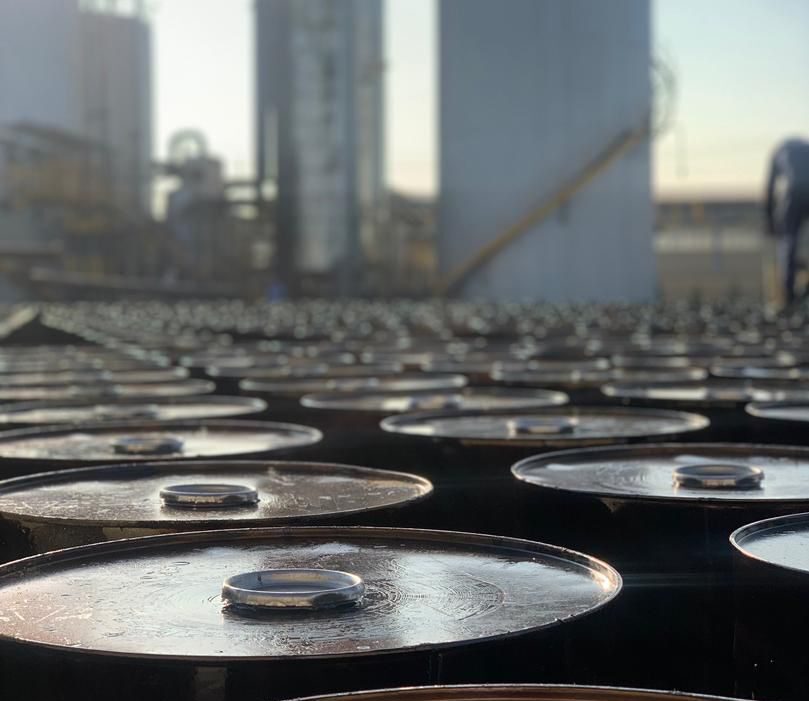
Looking for a Reliable Supplier of PG Bitumen 64-22? Your Search Ends with Bitukim
With the evolving age of asphalt technology, the right choice of bitumen grade plays a fundamental role in building roads that are durable, strong, and safe. As a leading supplier of PG Bitumen 64-22, Bitukim provides the high-performance binder that engineers and contractors across the globe trust for their most demanding projects. (Contact Us)
What is PG 64-22?
PG Bitumen 64-22 is graded according to the Superpave grading system that measures bitumen based on the quality it is presumed to perform in a specific set of climatic conditions. Its two digits in its name inform us of the range of temperature in which the binder is intended to perform:
-
64°C: The highest pavement temperature it can sustain without structural capacity loss.
-
-22°C: The lowest pavement temperature at which it can resist cracking due to being too brittle.
This makes PG 64-22, supplied by Bitukim, ideally suited to temperate to warm climates, where pavement must endure hot days during summer as well as the occasional cold snap in winter.
Moreover, Bitukim can provide polymer-modified PG 64-22, which demonstrates even better elasticity, rutting resistance, and fatigue life for specialized applications.
Where is PG 64-22 Mostly Used?
As a premier supplier of PG Bitumen 64-22 for the Middle East, Africa, and beyond, Bitukim supports a wide range of applications. This grade is extensively applied in North America, the Middle East, Europe, and parts of Asia and Latin America, mainly in relatively warm climatic zones. It is well-liked owing to its consistent performance under thermal stress as well as under moderate traffic.
Due to its wide temperature range, PG 64-22 is commonly chosen for:
-
Regional and national highways
-
Major roads and secondary roads
-
Airports and taxiways
-
Commercial parking lots
-
Asphalt overlay and rehabilitation projects
Why Source PG Bitumen 64-22 from Bitukim?
Choosing Bitukim as your supplier of PG Bitumen 64-22 means more than just purchasing a product; it means gaining a partner dedicated to your project’s integrity. Our PG 64-22 is consistently tested to ensure it meets the highest standards for performance and reliability. We offer:
-
Quality Assurance: Every shipment meets strict Superpave specifications.
-
Global Logistics: Strategically located in Dubai, we ensure efficient and timely delivery to your project site, anywhere in the region.
-
Technical Expertise: Our team provides expert guidance on handling and application to ensure optimal performance.
-
Supply Reliability: We maintain robust stock levels to meet your project timelines, big or small.
Bitukim’s Storage and Handling Guidelines
As your trusted supplier of PG Bitumen 64-22, we advise that proper handling and storage are key to preserving the product’s quality. Some best practices are as follows:
-
Recommended Storage Temperature: 140–165°C
-
Pumping Temperature: ~150°C
-
Avoid overheating (above 180°C) to prevent oxidative hardening
-
Use insulated tanks and pipelines for an even temperature profile
By following these standards, the binder does not degrade and works as desired when mixing and laying.
Your Trusted Partner for High-Performance Asphalt Solutions
Whether you’re paving a busy urban highway or designing a rural road network, Bitukim’s PG Bitumen 64-22 offers a balance of strength, flexibility, and economy. Its proven performance under a wide range of environmental conditions makes it a trusted option for engineers, contractors, and government agencies alike.
When you need a supplier of PG Bitumen 64-22 who guarantees quality, reliability, and expert support, the choice is clear.
Contact Bitukim today for a quote and let us supply the foundation for your next successful project.
Bitukim | Your Premier Supplier of PG Bitumen 64-22
Dubai Office: No. 2305 of the Burlington Tower, Business Bay, Dubai, UAE
Phone: +(971) 4 566 4998
Mobile: +971 (50) 940 9246
Email: info@bitukim.com
Get your quote today: www.bitukim.com
Specification
| Characteristics | Units | Standard | Value |
|---|---|---|---|
| Fresh binder | |||
| Flash point | ºC | AASHTO T48 | >230 |
| Rotational viscosity @ 135ºC | Pa.s | AASHTO T316 | <3,00 |
| DSR T for G*/sin δ>1 kPa | ºC | AASHTO T315 | 64 |
| Hardening Resistance at 163 ºC (RTFOT) | |||
| Mass change (absolute value) | % | AASHTO240 | 1,00 |
| DSR T for G*/sin δ>2,20 kPa | ºC | AASHTO T315 | 64 |
| PAV aging | EN-14769 | ||
| DSR T for G*·sin δ<5000 kPa | ºC | AASHTO T315 | 22 |
| BBR T for stiffness (S)<300 MPa | ºC | AASHTO T313 | -12 |
| BBR T for m-value>0,3 | ºC | AASHTO T313 | -12 |

